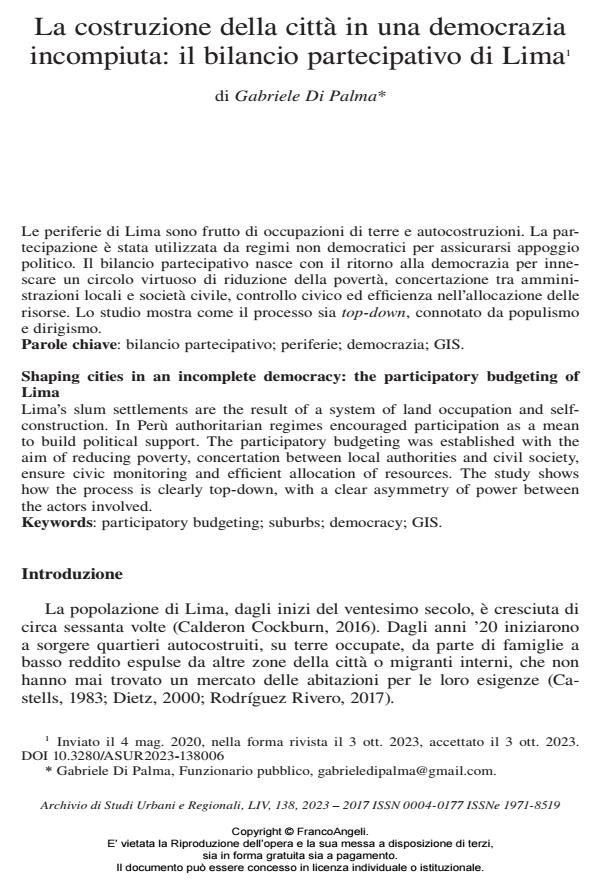Shaping cities in an incomplete democracy: the participatory budgeting of Lima
Journal title ARCHIVIO DI STUDI URBANI E REGIONALI
Author/s Gabriele Di Palma
Publishing Year 2024 Issue 2023/138
Language Italian Pages 25 P. 111-135 File size 375 KB
DOI 10.3280/ASUR2023-138006
DOI is like a bar code for intellectual property: to have more infomation
click here
Below, you can see the article first page
If you want to buy this article in PDF format, you can do it, following the instructions to buy download credits

FrancoAngeli is member of Publishers International Linking Association, Inc (PILA), a not-for-profit association which run the CrossRef service enabling links to and from online scholarly content.
Lima’s slum settlements are the result of a system of land occupation and self¬construction. In Perù authoritarian regimes encouraged participation as a mean to build political support. The participatory budgeting was established with the aim of reducing poverty, concertation between local authorities and civil society, ensure civic monitoring and efficient allocation of resources. The study shows how the process is clearly top-down, with a clear asymmetry of power between the actors involved.
Keywords: participatory budgeting; suburbs; democracy; GIS.
Gabriele Di Palma, La costruzione della città in una democrazia incompiuta: il bilancio partecipativo di Lima in "ARCHIVIO DI STUDI URBANI E REGIONALI" 138/2023, pp 111-135, DOI: 10.3280/ASUR2023-138006